
I found this library book at the thrift store, and bought it because it was 昭和レトロ Showa Retro USA. Published in 1968, this childrens book, written for elementary school readers, explained the daily life of people in Japan, described some of the traditional culture, described modernization, and covered some parts of history.
The history presented in this book, however, was deceptive.
Remember, this was 1968, during the Cold War, and Japan had been integrated into the US sphere of influence, and had (and has) military bases to threaten China.
The first thing that stood out for me was the story about the rebuilding of Tokyo after WW2, which was necessary after the massive US firebombing campaign which destroyed Tokyo. This incident wasn’t mentioned, directly, though the rebuilding was.
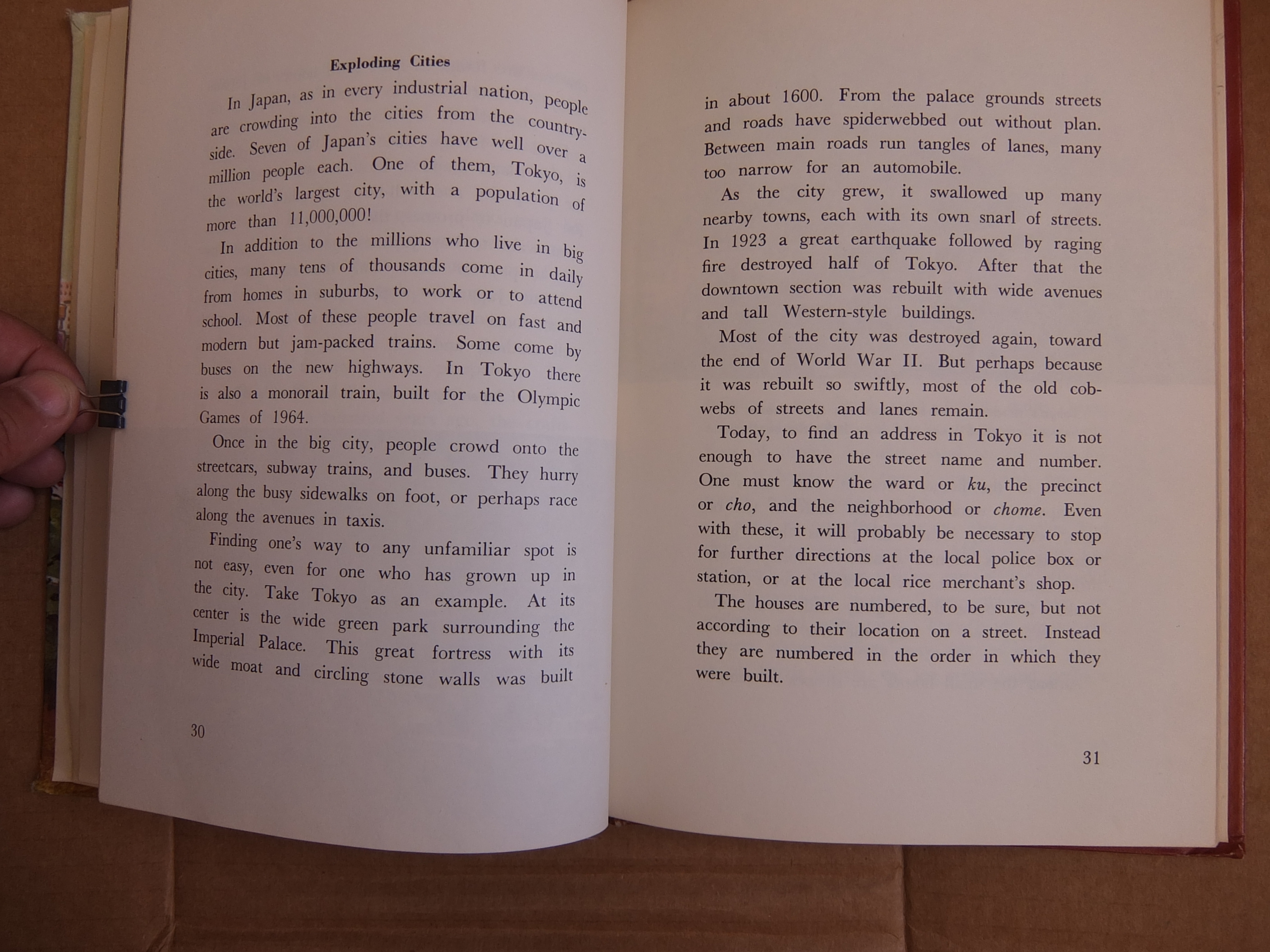
What did they have to say about the use of atomic bombs on Hiroshima and Nagasaki? Fortunately, the book provided an index, so I could quickly find all the references to the two cities, and see if the facts about the bombings were also minimized.
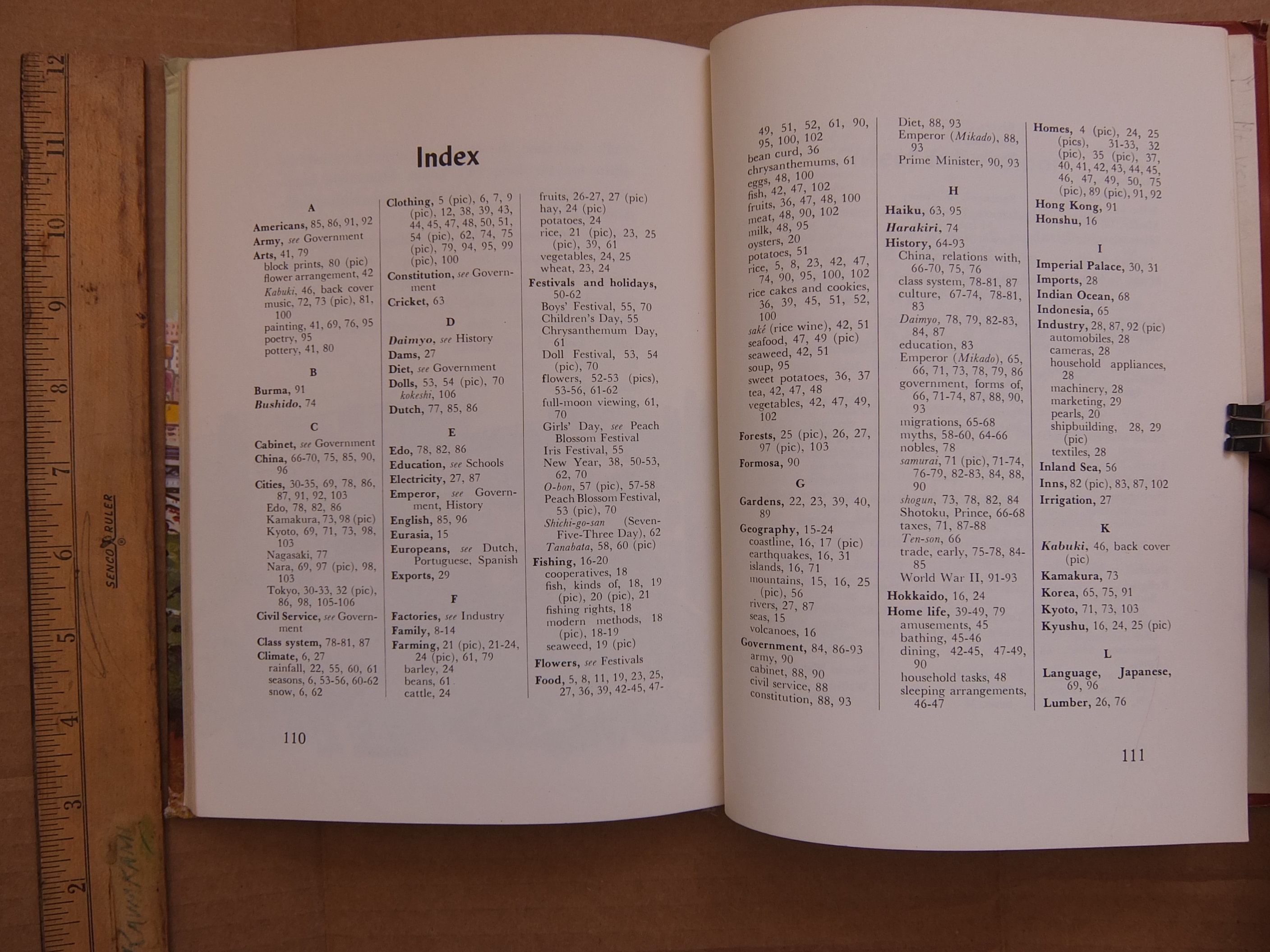
Interesting. There’s no entry for Hiroshima or Nagasaki. There is an entry for Nagasaki under “Cities”, and refers to page 77. The page is part of a section about trade history and how Japan was closed off to foreign trade.
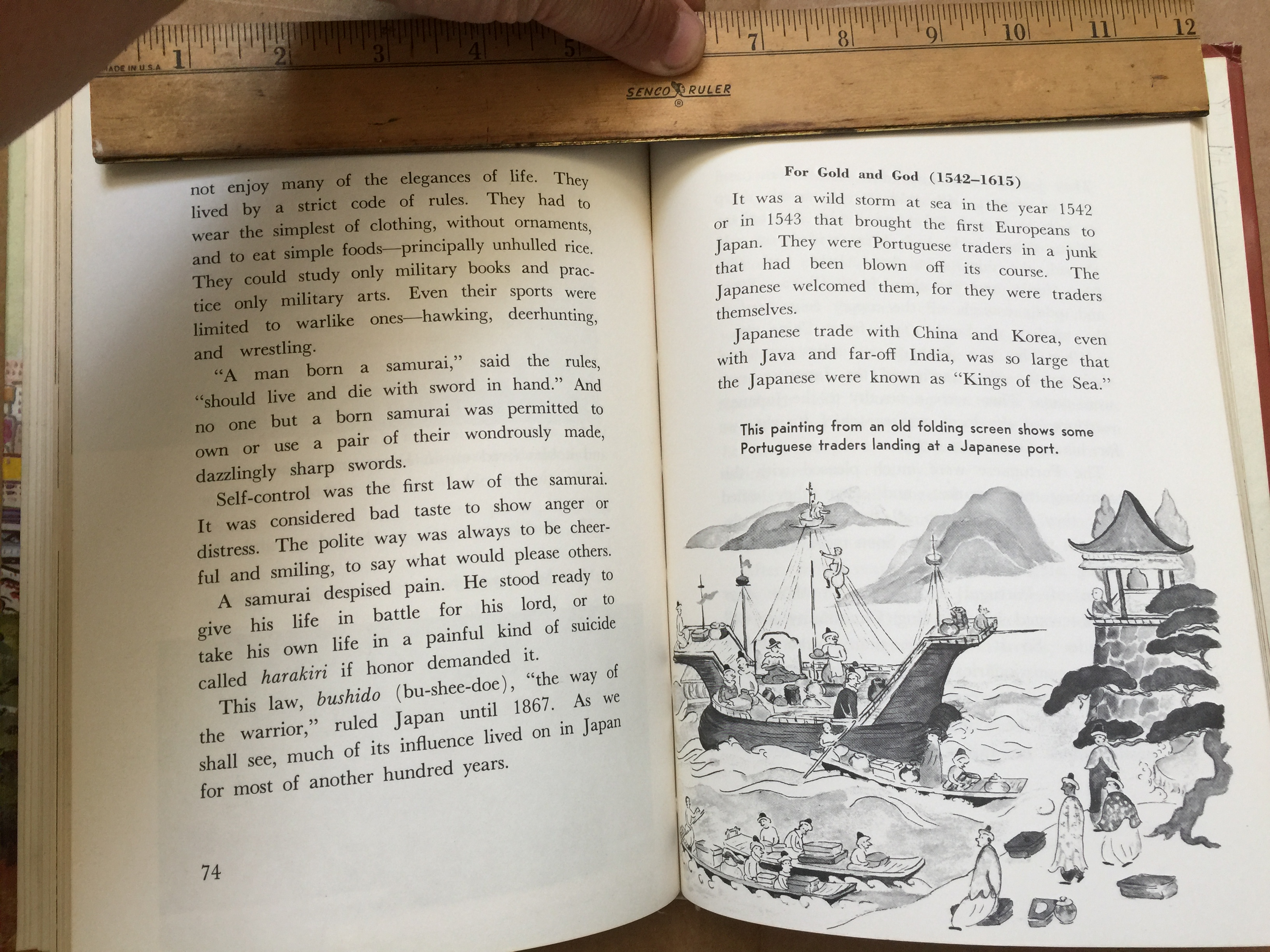
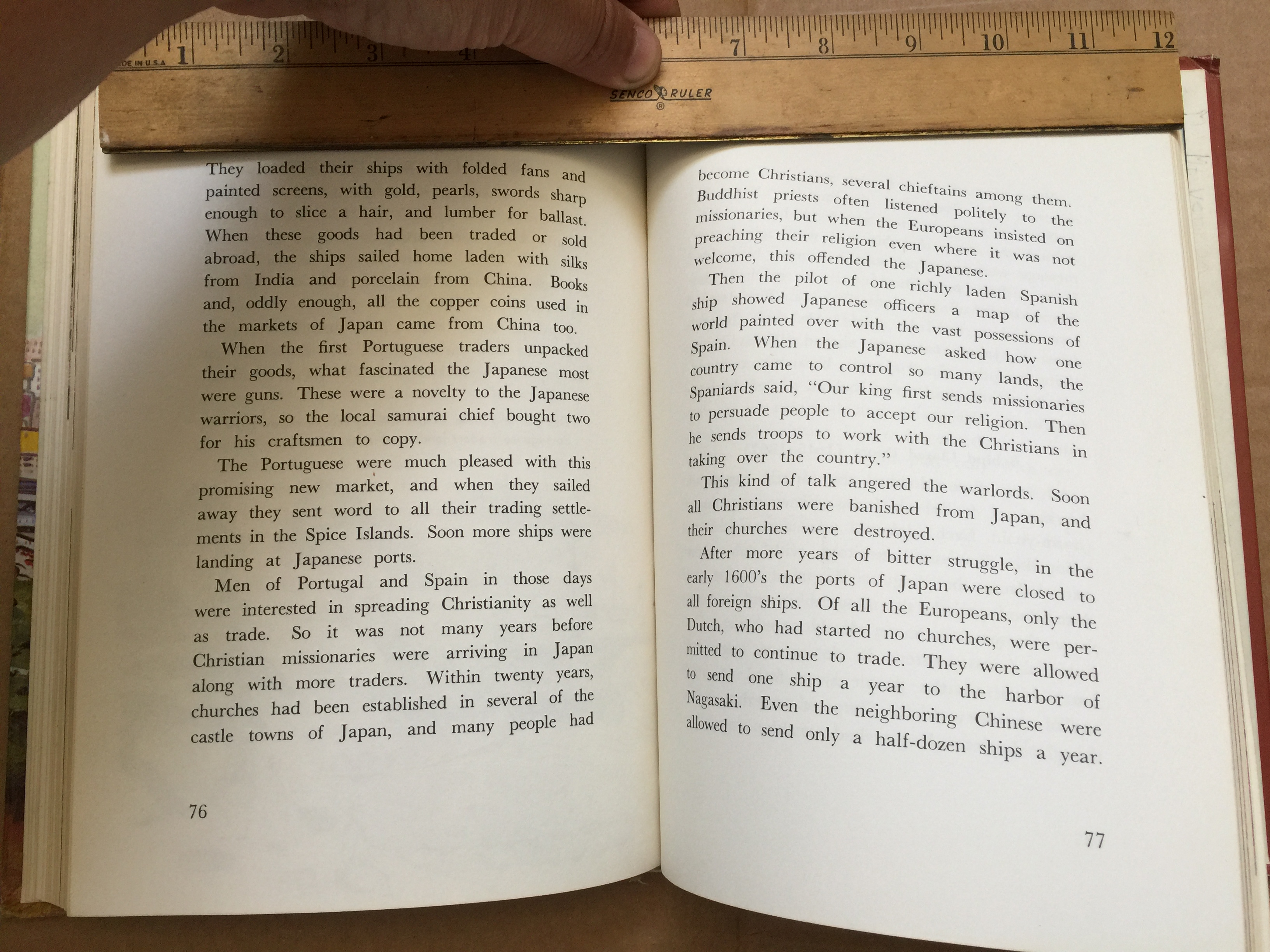
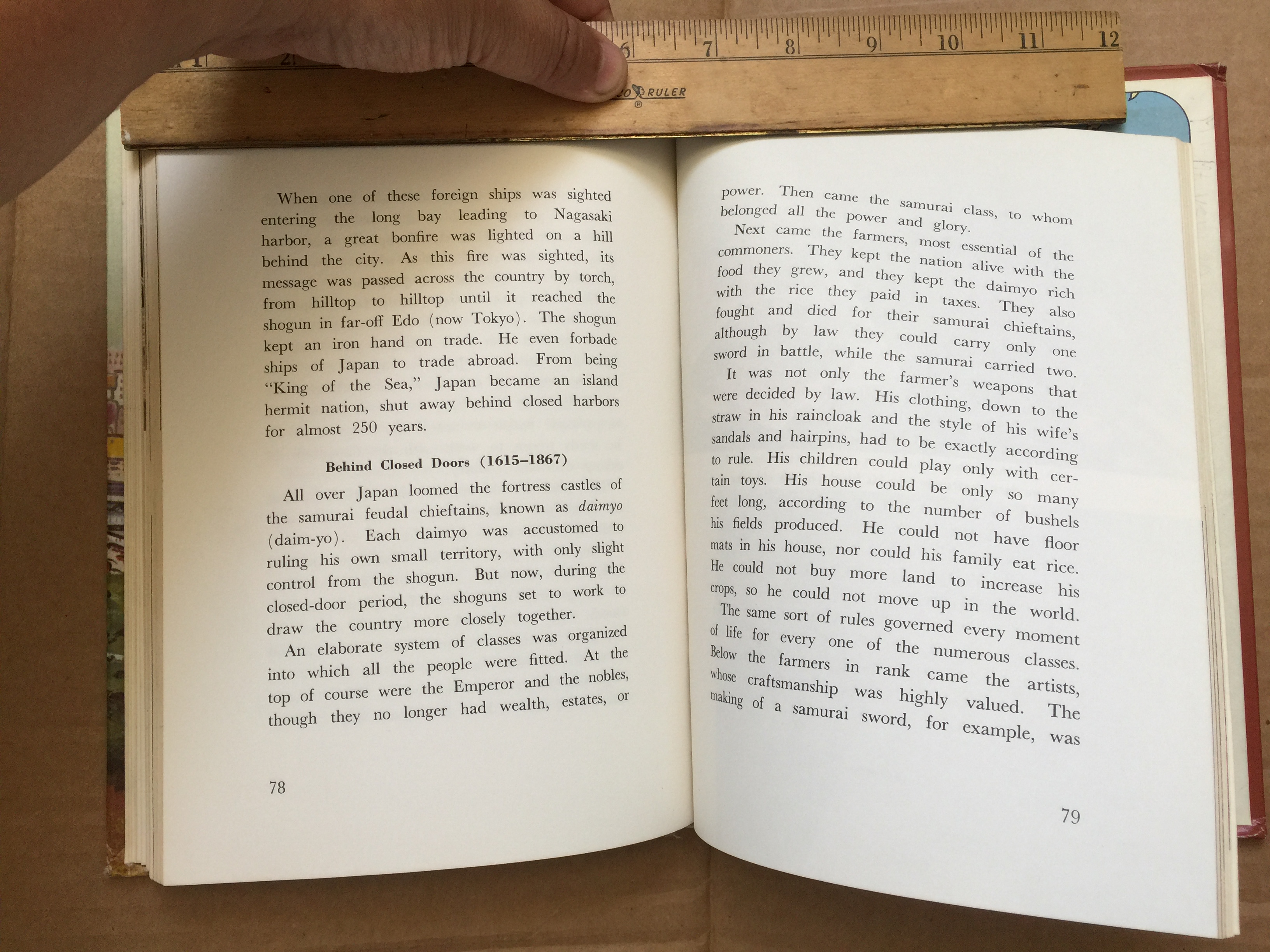
So, the bombings of Hiroshima and Nagasaki are not mentioned. These were the first, and only, uses of the atomic bomb, a significant event in world history, but it was completely omitted from this history of Japan, and also of the United States, in this book.
What about this book’s treatment of World War II? It turns out that there is a section that includes WW2. Given that it was the primary military conflict that defined the relationship between the two countries, and led to the US takeover of Japan, and the inclusion of Japan in the US sphere of influence, there must be something.
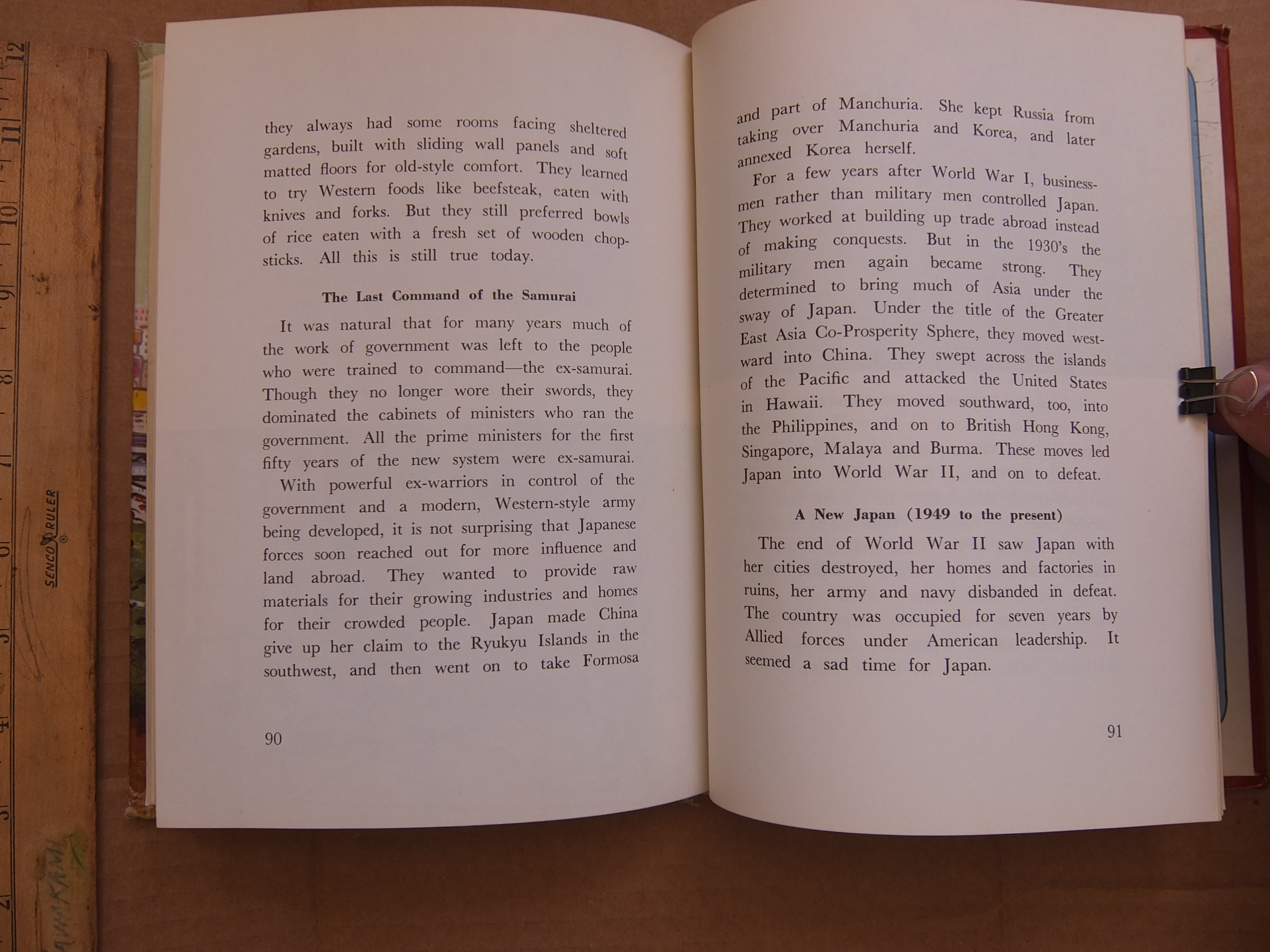
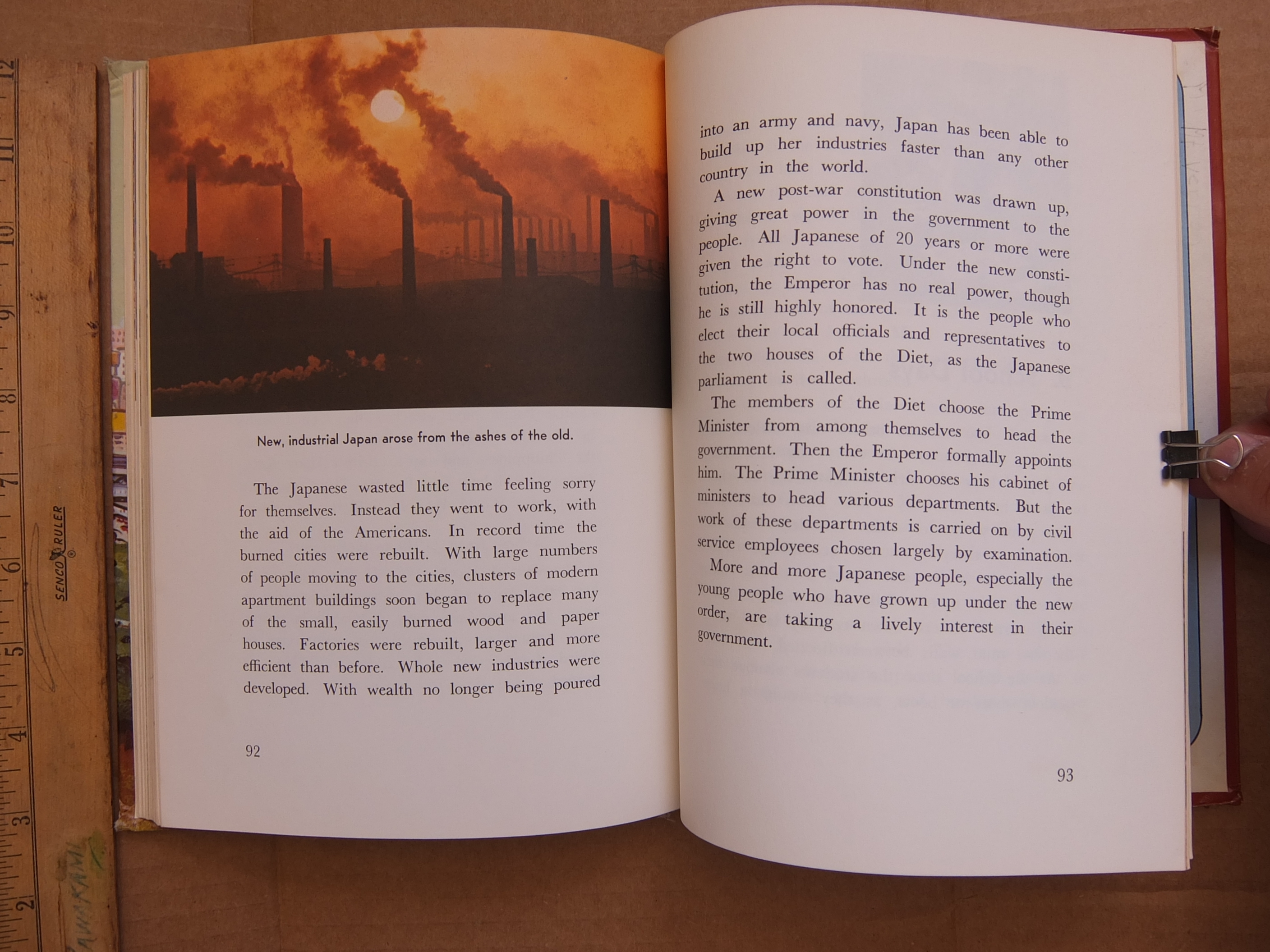
There’s approximately one page that covers the Empire of Japan, Japanese imperialism and colonization, World War II, Occupied Japan, and the reconstruction of Japan. It’s the period, not the facts that are described: of all those terms, only “World War II” is used.
US imperialist and trade interests in the South Pacific, as well as China’s participation in the war, are completely left out — but that’s still left out of history, so what can you expect.
Compare the fact that three pages were used to describe the period from 1542 to 1615, which might be called a period of Portugese attempts at religious imperialism, while Japanese imperialism and US imperialism and World War II merited only a single page.
Though this was a childrens book, and you cannot get into too much complexity with them, what amounts to the complete omission of World War II makes me wonder what’s going on here. There are different ways to critique this work, but I haven’t put in the mental energy to do so. You’re on your own.
This deceptive distortion of history is available for sale on Ebay or directly from me.
